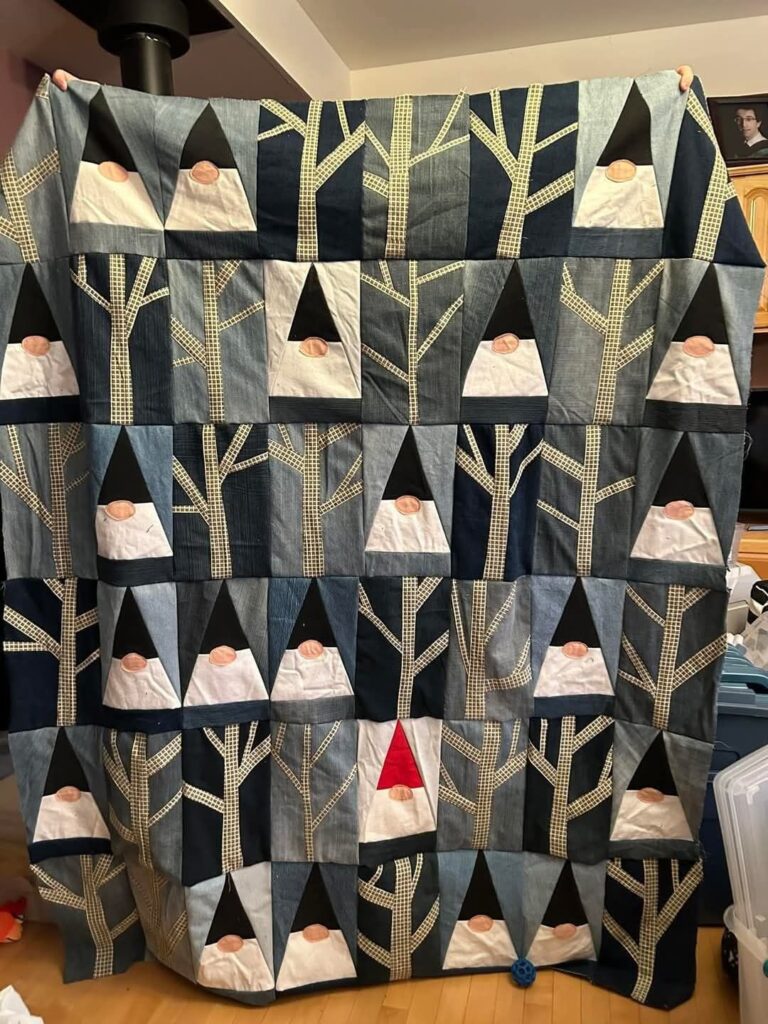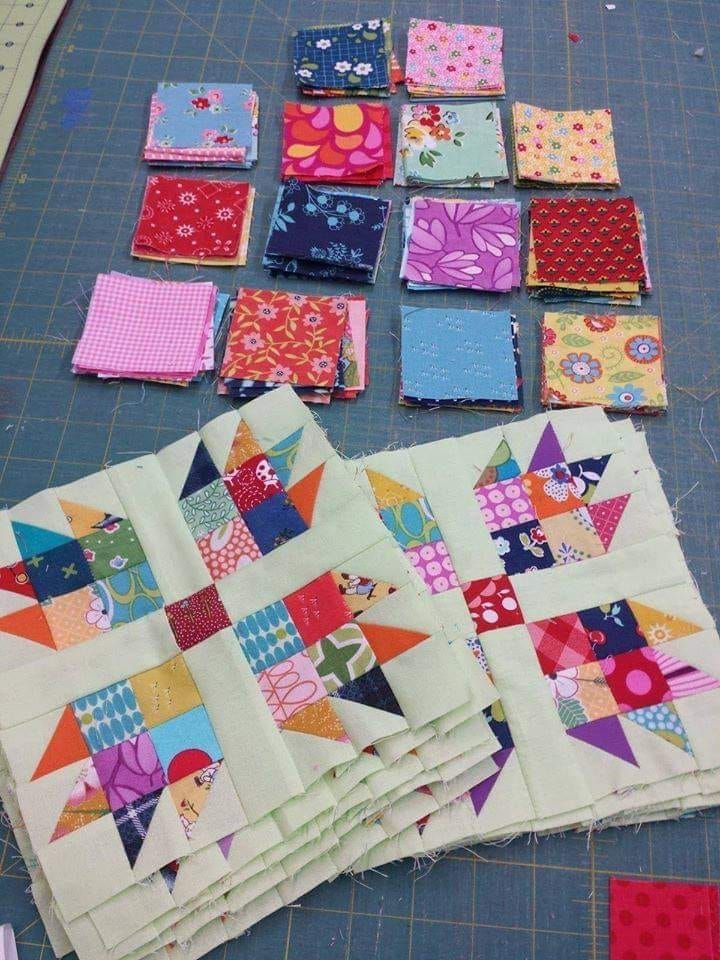

The Bear Paw Quilt Block Free Pattern is composed of a series of squares, triangles, and rectangles arranged to form a stylized paw print.
This geometric arrangement creates a visually striking design while allowing for multiple color combinations and fabric choices. The repeatable nature of the block makes it perfect for large quilts or smaller accent pieces.
By experimenting with shades, textures, and patterns, you can personalize your quilt while preserving the recognizable Bear Paw design.

For instance, smaller blocks may be ideal for baby quilts or pillow covers, while larger blocks make bold statements in full-size bed quilts. Understanding the scale and proportion of each piece is crucial to achieving a balanced final design.
Another key aspect of this pattern is the technique involved in piecing. Accurate cutting and precise sewing are essential for the points and corners to align correctly. Many quilters appreciate the Bear Paw Quilt Block Free Pattern because it challenges their skills while offering a visually rewarding result. The block’s symmetry and repetition make it satisfying to complete row after row.
Using the Bear Paw Quilt Block Free Pattern also encourages creativity. You can mix prints, solids, and textures, experiment with color gradients, or even apply modern twists to a traditional layout. Whether your goal is a rustic woodland quilt or a contemporary design, this pattern serves as a versatile foundation for innovative projects.
Finally, this block pattern promotes learning and mastery of quilting techniques such as half-square triangles, strip piecing, and accurate seam allowances. These skills are transferable to many other quilt blocks, making the Bear Paw Quilt Block Free Pattern both a creative and educational tool for quilters of all levels.
Creating the Bear Paw Quilt Block Free Pattern involves cutting and piecing individual components into a cohesive paw design. Start by selecting fabrics for the paw prints and the background. Contrasting fabrics are recommended to make the paw design pop, while complementary shades ensure harmony across the quilt.
Begin by cutting squares for the central base of each paw. Next, cut smaller squares and triangles to form the paw “toes.” Precision is key: each piece must match the required dimensions to ensure the points align correctly. Using a rotary cutter and a quilting ruler makes this process easier and more accurate.
Once your pieces are cut, assemble the paw sections. Start with the triangles to form each toe, then attach them to the central square. Press seams carefully to maintain flatness and sharp edges. The Bear Paw Quilt Block Free Pattern relies on symmetry, so consistent pressing and alignment are crucial.
After constructing individual paw blocks, sew them together in your desired layout. Depending on the quilt’s size, you may repeat the block multiple times or alternate with plain squares for visual interest. The repetitive pattern enhances the overall impact, creating a dynamic yet cohesive quilt.
Pay attention to seam allowances throughout the process. A standard 1/4-inch seam is recommended for most quilting projects. This ensures accuracy and allows pieces to fit together seamlessly. Trimming excess fabric as needed will maintain clean lines and sharp points.
Finally, complete the quilt top by adding borders or sashing if desired. This frames the Bear Paw Quilt Block Free Pattern and adds structure. Once finished, quilt the layers together using your preferred quilting method—hand quilting, machine quilting, or long-arm quilting—depending on your skill level and tools.
The Bear Paw Quilt Block Free Pattern is highly versatile, allowing for various creative applications beyond traditional bed quilts. Many quilters use this block to create decorative wall hangings, table runners, and pillow covers. The distinctive paw motif adds a rustic or woodland theme to any space.
Baby quilts are another popular project. The playful design of the paw prints is perfect for children’s rooms, and using soft fabrics ensures a cozy and comforting texture. You can also personalize colors to match nursery themes, making the quilt a cherished keepsake.
In addition to home décor, this block pattern works well for gifts. Handmade quilts using the Bear Paw Quilt Block Free Pattern are thoughtful presents for birthdays, holidays, or special occasions. The recognizable motif shows care and attention to detail, making it a meaningful gift.
Quilters also experiment with modern interpretations by using unexpected color schemes, minimalist designs, or ombre effects. The geometric nature of the paw pattern adapts beautifully to contemporary styles, proving that tradition and innovation can coexist.
Accessories like tote bags, cushion covers, or small wall hangings also benefit from this pattern. Even a single block can become a statement piece when framed or displayed creatively. The Bear Paw Quilt Block Free Pattern lends charm and visual interest to small-scale projects.
Finally, combining this block with other traditional or modern quilt blocks creates unique patchwork designs. Mixing patterns while maintaining color harmony results in quilts that are both diverse and cohesive, showcasing your creativity and skill.
Achieving perfect Bear Paw Quilt Block Free Pattern results requires precision, patience, and proper tools. First, always measure and cut fabrics accurately. A cutting mat, rotary cutter, and quilting ruler are essential for maintaining uniformity.
Maintaining consistent seam allowances is critical. A 1/4-inch seam ensures that pieces align properly, preventing gaps or misaligned points. Press seams after each step to create smooth, flat blocks.
Color selection is key to highlighting the paw motif. High-contrast fabrics make the design stand out, while coordinated colors create a subtle, elegant look. Experiment with different shades and textures to achieve the desired effect.
Practice makes perfect. Beginners should start with a single block to understand the structure before committing to a full quilt. This allows you to refine cutting, piecing, and pressing techniques.
Using templates or patterns ensures accuracy, especially for triangles and points. Many quilters create reusable templates from cardboard or plastic to speed up production and maintain consistency.
Finally, take your time and enjoy the process. The Bear Paw Quilt Block Free Pattern is both rewarding and educational. Completing a quilt or project with this pattern brings immense satisfaction and a sense of accomplishment.
1. Is the Bear Paw Quilt Block Free Pattern suitable for beginners?
Yes, with careful cutting and attention to detail, beginners can create beautiful blocks. Starting with one block is recommended before attempting larger quilts.
2. What fabrics work best for this pattern?
Cotton quilting fabrics are ideal. Choose contrasting colors for the paw and background to highlight the design.
3. How many pieces are in a single block?
Typically, each block consists of 9–13 pieces, including the central square, triangles, and smaller squares forming the paw toes.
4. Can I adjust the block size?
Yes, scaling the block is easy. Increase or decrease the size of each piece proportionally for small or large projects.
5. Do I need special tools to make this block?
Basic quilting tools like a rotary cutter, ruler, cutting mat, and sewing machine are sufficient. Templates may also help with triangles.
6. Can this block be combined with other quilt patterns?
Absolutely. The Bear Paw block pairs well with traditional or modern designs for varied patchwork quilts.
The Bear Paw Quilt Block Free Pattern is a versatile, charming, and timeless design that adds personality and elegance to any quilting project.
Whether you are making a traditional quilt, a baby blanket, or decorative accessories, mastering this pattern enhances both skill and creativity. Its geometric beauty, adaptability, and classic appeal make it a favorite among quilters of all levels.
Share your creations and leave your honest feedback and suggestions below—your insights inspire other quilters and keep the craft thriving in new, exciting ways.